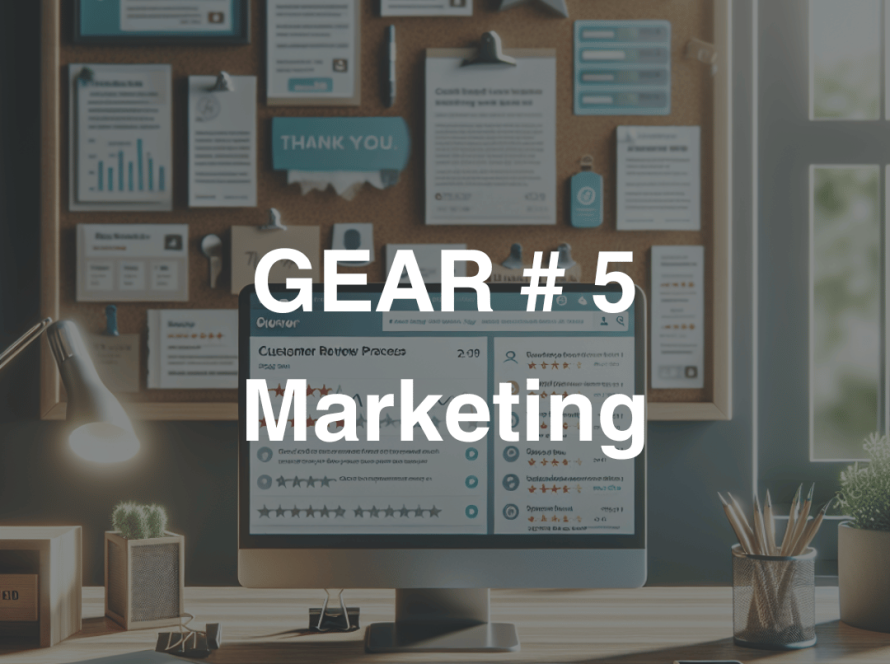Finding the best free kpi dashboard software for your business can revolutionize your approach to data visualization and business intelligence. Whether you’re looking to track your company’s performance metrics or make informed strategic decisions, choosing the right tool is crucial. Some top options for free KPI dashboard software include:
-
Google Data Studio: This tool excels in changing complex data into accessible visual insights with seamless integration and customization options.
-
Klipfolio: Offers interactive dashboards and real-time analytics, perfect for businesses desiring straightforward data integration without technical complexity.
-
Mixpanel: Ideal for product analytics, providing deep insights into user behavior and engagement patterns.
KPI dashboards serve as vital tools that leverage data visualization to provide a clear and concise picture of your organization’s performance. A well-designed dashboard empowers business intelligence by aligning crucial metrics with strategic objectives, enabling timely and data-driven decisions.
I’m Russell Rosario, co-founder of Profit Leap, where we strive to democratize business intelligence for entrepreneurs. With my background as a fractional CFO, CPA, and software engineer, I’ve dedicated my career to simplifying complex data insights through innovative tools like free KPI dashboard software.

Essential free kpi dashboard software terms:
– kpi dashboard open source software
– kpi tracking software
Understanding KPI Dashboards
KPI dashboards are like a snapshot of your business’s health, giving you a quick, clear view of how things are going. They consolidate all the important metrics, or Key Performance Indicators (KPIs), into one easy-to-read display. This helps you track your progress and see if you’re meeting your goals.
Purpose of KPI Dashboards
The main purpose of a KPI dashboard is to turn raw data into actionable insights. Imagine having all your business’s crucial stats right at your fingertips. That’s what a KPI dashboard does. It helps you see trends, spot issues early, and make informed decisions without waiting for monthly reports.
Benefits of Using KPI Dashboards
-
Real-Time Data: You get live updates, allowing you to respond quickly to changes. For instance, a marketing team can adjust campaigns on the fly based on current performance.
-
Unified View: Instead of juggling multiple reports, you get all your key metrics in one place. This unified approach helps everyone in the company stay on the same page.
-
Customizable Visualization: KPI dashboards offer various ways to display data, like charts and graphs. You can tailor these to suit your needs, making complex data easier to understand.
-
Improved Decision-Making: With all your data in one format, you can easily identify trends and make informed decisions. According to Forbes, businesses using custom dashboards often see better ROI and improved efficiency.

KPI dashboards are essential tools for businesses aiming to thrive in today’s competitive landscape. They simplify complex data and help you make more confident decisions, driving growth and success.
In the next section, we’ll explore Free KPI Dashboard Software Options, focusing on open-source tools, community-driven platforms, and Profit Leap’s free tools.
Free KPI Dashboard Software Options
When it comes to free KPI dashboard software, there are several fantastic options that won’t cost you a dime. These tools allow you to monitor and visualize your business’s performance without breaking the bank. Let’s explore some of the best choices available.
Open-Source and Community-Driven Tools
Open-source and community-driven KPI dashboard tools are a great starting point for businesses that want flexibility and customization. These tools are developed and maintained by a community of developers who continuously improve them.
- SimpleKPI: This platform provides straightforward KPI tracking with real-time updates. It’s highly customizable, allowing teams to set up dashboards that fit their specific needs.
Profit Leap’s Free Tools
At Profit Leap, we offer a suite of free tools designed to help businesses track their performance effectively. Our Success Dashboard provides customizable dashboards and advanced analytics, empowering you to make data-driven decisions without any cost.
Our tools are perfect for businesses looking to harness the power of their data without the burden of high software costs. By using Profit Leap’s free tools, you can gain valuable insights into your performance and optimize your operations for better results.
In the next section, we’ll guide you through How to Create a Free KPI Dashboard, covering goal setting, metric identification, data integration, and customization.
How to Create a Free KPI Dashboard
Creating a free KPI dashboard is like piecing together a puzzle where each element plays a crucial role in revealing the full picture of your business performance. Let’s break down the steps to build your own dashboard.
Goal Setting
Start by defining clear goals for your dashboard. What do you want to achieve? Whether it’s improving sales, enhancing customer service, or boosting operational efficiency, your goals will guide the rest of the process.
Example: If your goal is to boost customer satisfaction, focus on KPIs like customer satisfaction score and average response time.
Metric Identification
Once your goals are set, identify the specific metrics you need to track. Choose KPIs that directly align with your goals and provide actionable insights.
Tips:
- Limit to 5-10 KPIs to keep your dashboard focused and avoid information overload.
- Assign a clear owner for each KPI to ensure accountability.
- Use different KPIs for various departments (e.g., sales, marketing).
Data Integration
Decide where your data will come from. This could be CRM systems, marketing tools, or financial software. The aim is to have all relevant data easily accessible.
Steps:
- List all necessary data sources.
- Ensure data compatibility across systems.
- Use tools like Improvado for automatic data syncing.
Customization
Customization is key to making your dashboard work for you. Tailor it to your needs with visual elements like charts, graphs, and tables. Keep the design simple and consistent.
Key Elements:
- Header: Include a title and brief description.
- Widgets: Use graphs, tables, and diagrams to present data.
- Footer: Add additional info like definitions or comments.
Example: A sales dashboard might feature a line graph for monthly sales growth and a pie chart for market share distribution.
Bringing It All Together
With your goals set, metrics identified, data integrated, and dashboard customized, you’re ready to start tracking your business performance. A well-designed dashboard not only tracks KPIs but also drives action by providing insights at a glance.
Next, we’ll explore Best Practices for Using KPI Dashboards, focusing on data visualization, performance tracking, and decision-making to maximize the benefits of your dashboard.
Best Practices for Using KPI Dashboards
Using a KPI dashboard effectively can transform your business strategy. Here’s how to make the most of it:
Data Visualization
Data visualization is the art of turning complex data into simple, visual formats. This is crucial for making your dashboard intuitive and easy to understand.
-
Keep it Simple: Use clear and concise visuals. A pie chart or bar graph can be more effective than a cluttered spreadsheet.
-
Highlight Key Metrics: Focus on the most important data. Use colors or symbols to draw attention to critical KPIs.
-
Consistency is Key: Maintain a uniform style across all visual elements. This helps users quickly interpret data without confusion.

Performance Tracking
Your dashboard is not just a display tool—it’s a performance tracker. It helps you monitor progress and spot trends over time.
-
Set Regular Checkpoints: Decide how often you’ll review your KPIs. Weekly or monthly reviews can help you stay on track.
-
Use Historical Data: Compare current performance with past data to identify trends and patterns.
-
Adjust as Needed: If a metric isn’t meeting expectations, use your dashboard to analyze why and make informed adjustments.
Decision Making
A well-designed dashboard is a powerful tool for decision making. It provides insights that guide strategic choices.
-
Make Data-Driven Decisions: Use the insights from your dashboard to make informed choices. This reduces guesswork and increases accuracy.
-
Set Alerts: Some dashboards allow you to set alerts for when KPIs reach certain thresholds. This ensures you can act quickly on critical changes.
-
Encourage Collaboration: Share your dashboard with team members. This fosters a culture of transparency and collective decision-making.
By following these best practices, your free KPI dashboard software becomes more than just a tool—it’s a strategic asset that drives your business forward.
Frequently Asked Questions about Free KPI Dashboard Software
How to track KPIs for free?
Tracking KPIs doesn’t have to be expensive. There are several free KPI dashboard software options available that allow businesses to monitor their performance without breaking the bank. Many of these tools offer basic features like data visualization, real-time updates, and customizable dashboards.
-
Databox is a popular choice, offering over 300 pre-built dashboards that make it easy for beginners to start tracking KPIs. It provides real-time data visualization, which helps you keep an eye on important metrics as they change.
-
Open-source tools like Metabase or Grafana offer community-driven platforms that are highly customizable. They allow you to connect various data sources and create detailed visualizations.
By leveraging these free tools, businesses can effectively track their KPIs and gain insights without incurring additional costs.
Does Excel have a KPI template?
Yes, Excel is a powerful tool that can be used to create KPI dashboards. It offers a range of templates that make it easier to track performance metrics like sales.
-
Excel’s KPI templates often include features like bar charts, line graphs, and pie charts. These visualizations help in understanding sales performance and other key metrics at a glance.
-
You can download free templates, which are customizable to fit specific needs. For example, you can adjust the template to track sales performance, profit margins, or any other KPI relevant to your business.
Excel is a great option for businesses looking to use existing software for KPI tracking without investing in new tools.
Which software is used to build a KPI dashboard?
When it comes to building a KPI dashboard, several software options stand out for their ability to handle data analytics and visualization.
-
Power BI by Microsoft is widely used for creating custom dashboards. It connects with multiple data sources and offers advanced analytics features, making it a top choice for businesses needing in-depth data analysis.
-
Tableau is another popular tool known for its robust data visualization capabilities. It allows users to create interactive dashboards that are easy to share and collaborate on.
These tools, along with others like Geckoboard and Databox, provide diverse options for businesses to choose from based on their specific needs and technical expertise. Whether you’re looking for something simple or a tool with advanced analytics, there’s a free KPI dashboard software option available to suit your requirements.
Conclusion
In today’s business environment, leveraging data effectively is crucial for success. At Profit Leap, we understand that access to insightful data can transform your business operations. That’s why we offer custom solutions, including our AI business advisor, Huxley, designed to provide you with custom insights that align with your business goals.
Huxley isn’t just about crunching numbers—it’s about making those numbers work for you. By using advanced AI capabilities, Huxley delivers precise forecasting and actionable insights, helping you make informed decisions quickly and confidently. Imagine reducing your accounting time significantly while also gaining a clearer view of your business’s future.
Our dashboards are not only visually appealing but also highly interactive and customizable. They are crafted to meet the unique needs of your business, ensuring that the metrics displayed are relevant and provide a real-time view of your operations. This means you can focus on growth and innovation rather than getting lost in irrelevant data.
Consider the case of Michael Solis from TransRide. By implementing our sales forecasting and management tool, his business turned around swiftly. This success story, among others, demonstrates the tangible impact Profit Leap can have on your business.
Ready to harness the full potential of your data? Explore how our services can revolutionize your business intelligence strategy by visiting our KPI Dashboard Software page.
Together, let’s drive your business growth with data-driven insights and innovation.


